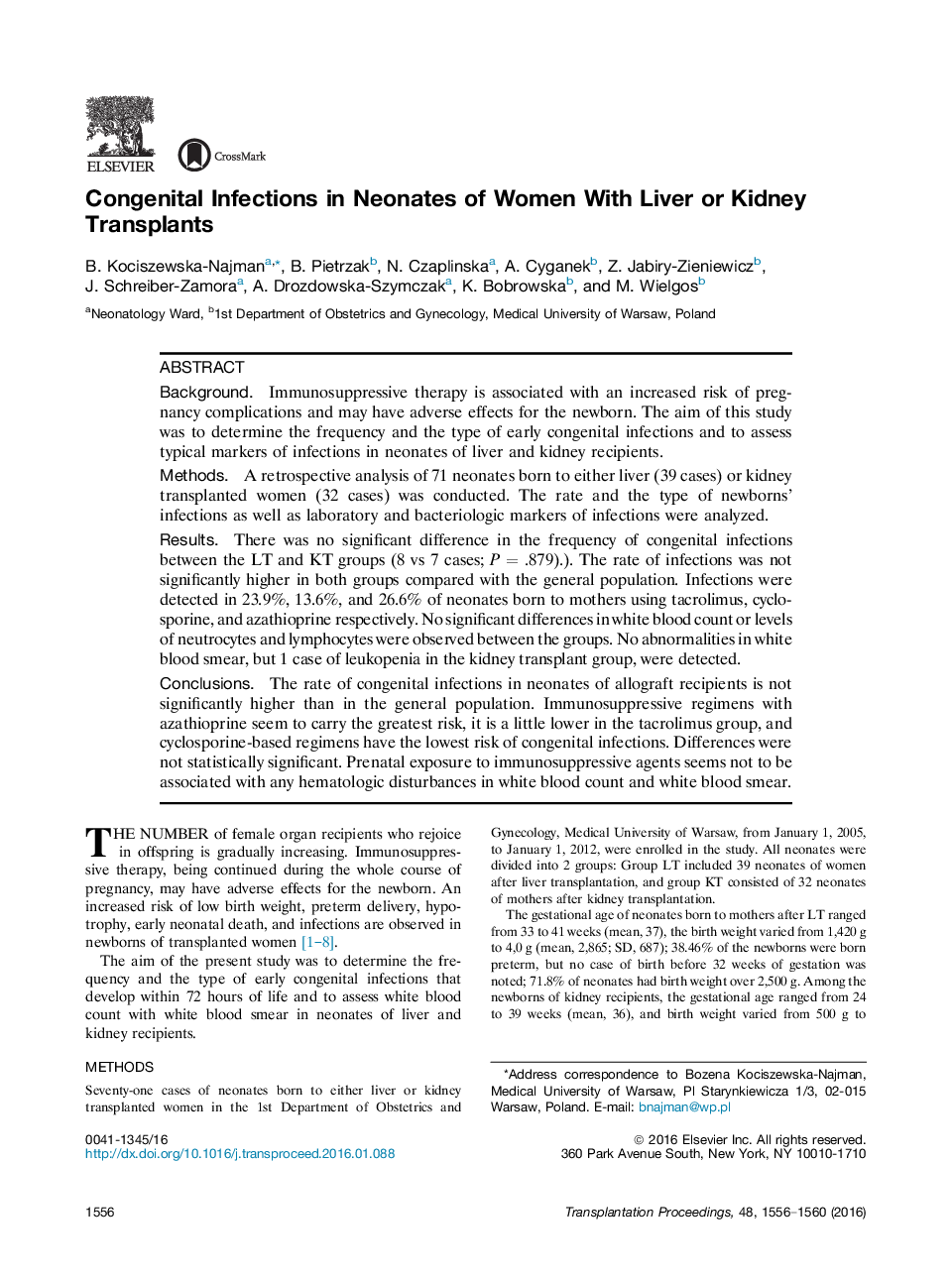| Article ID | Journal | Published Year | Pages | File Type |
|---|---|---|---|---|
| 4256072 | Transplantation Proceedings | 2016 | 5 Pages |
•The rate of congenital infections in neonates of allograft recipients is not significantly higher than in the general population.•Immunosuppressive regimens with azathioprine seem to carry the greatest risk, the risk is a little lower in the tacrolimus group, and cyclosporine-based regimens show the lowest risk of congenital infections. Differences were not statistically significant.•Prenatal exposure to immunosuppressive agents seems not to be associated with any hematologic disturbances in white blood count and white blood smear.
BackgroundImmunosuppressive therapy is associated with an increased risk of pregnancy complications and may have adverse effects for the newborn. The aim of this study was to determine the frequency and the type of early congenital infections and to assess typical markers of infections in neonates of liver and kidney recipients.MethodsA retrospective analysis of 71 neonates born to either liver (39 cases) or kidney transplanted women (32 cases) was conducted. The rate and the type of newborns' infections as well as laboratory and bacteriologic markers of infections were analyzed.ResultsThere was no significant difference in the frequency of congenital infections between the LT and KT groups (8 vs 7 cases; P = .879).). The rate of infections was not significantly higher in both groups compared with the general population. Infections were detected in 23.9%, 13.6%, and 26.6% of neonates born to mothers using tacrolimus, cyclosporine, and azathioprine respectively. No significant differences in white blood count or levels of neutrocytes and lymphocytes were observed between the groups. No abnormalities in white blood smear, but 1 case of leukopenia in the kidney transplant group, were detected.ConclusionsThe rate of congenital infections in neonates of allograft recipients is not significantly higher than in the general population. Immunosuppressive regimens with azathioprine seem to carry the greatest risk, it is a little lower in the tacrolimus group, and cyclosporine-based regimens have the lowest risk of congenital infections. Differences were not statistically significant. Prenatal exposure to immunosuppressive agents seems not to be associated with any hematologic disturbances in white blood count and white blood smear.
